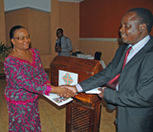The alcohol situation in Malawi documented in new research report
A modest proportion of Malawians - 14 per cent - are alcohol drinkers. On the other hand, those who do drink have a high and risky consumption level. These were two of the key conclusions in a report presented to the Malawian Minister of Health Wednesday. The report has mapped drinking habits in Malawi.
Malawi is in the same situation as many other countries, not the least in Africa. There are few reliable data on the alcohol situation, both with respect to consumption levels, distribution of drinking among the population, alcohol-related harm as well as to attitudes and knowledge about alcohol and alcohol regulation. The purpose of the new report is to close some of these information gaps in Malawi. The report has been produced in a collaboration between the University of Malawi and SINTEF Technology and Society in Norway.
The final version of the first summary report is be available here: “ALMA – Fighting poverty through misuse prevention in Malawi – summary report November 2013”.
Around 100 representatives from civil society, government agencies, media, academia and the industry were present when the first set of results from the ALMA study were presented at a launch conference in Lilongwe, the capital of Malawi. Alister Munthali from the Centre for Social research at the University of Malawi presented key results before the report was officially handed over to the Minister of Health, Hon. Catherine Gotani Hara, MP (picture at top of the article).
Non-communicable diseases
The Minister of Health acknowledged the importance of getting reliable data for formulation and implementation of effective policies to reduce alcohol-related harm. She pointed to the fact that harmful alcohol use is among the major risk factors for Non-Communicable Diseases such as heart diseases, diabetes, cancers, mental health disorders and injuries. Furthermore Ms. Hara said that many road traffic accidents and cases of gender-based violence in Malawi are linked to alcohol consumption.
The Minister continued by thanking the ALMA Project Team has complementing government efforts by providing evidence based information. Said Ms. Hara: “This assists the government in provision of social and health services to the citizens of this country. This is very commendable and I would like to encourage other researchers to emulate this good gesture”.
The pictures below show the research team behind the ALMA study; top from left: Arne H. Eide, Stine Hellum Braathen, Alister Munthali and Henrik Natvig. Second row from left: The audience, Gloria Azalde, another section of the audience and finally Erik Hoel.
Further down, to the right: Dr. Beatrice Mwagomba, Ministry of Health, who very ably chaired the ALMA launch conference.
 |
 |
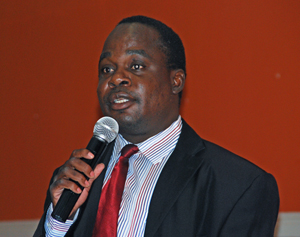 |
 |
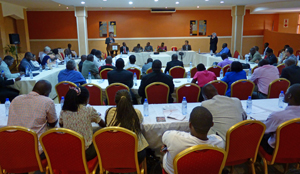 |
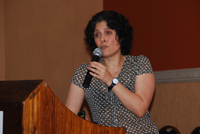 |
 |
 |
The importance of NGO involvement
The Minister of Health also said it is very pleasing to note that non-governmental organizations are taking an active role to complement government efforts in reducing alcohol misuse and dependency. In particular she mentioned Drug Fight Malawi and the collaborative process which has been conducted by government agencies and civil society to develop a new national alcohol policy.
 Survey among 60.000 adults
Survey among 60.000 adults
In the first round of the quantitative study husband and wife 18 years and above in 31.676 households were asked about their drinking habits. In the second round 1.795 of these households where both husband and wife had taken alcohol during the last year responded to a detailed questionnaire. The larger part of the data in the first ALMA report build on interviews with these 3.190 drinkers.
Also a qualitative study
The ALMA study also has a qualitative part. 69 individual interviews and 7 group interviews were conducted with persons with insight into local realities in Malawi with regard to alcohol sale and consumption; village headmen, owners of bars and nightclubs, local brewers and distillers, police officers, school teachers and headmasters, religious leaders, NGO representatives and health workers, among others. These interviews were used to better understand the ground situation and the statistical data in the study. Furthermore, the interviews give a picture of local drinking cultures, where and when alcohol sale and drinking takes place, people’s knowledge about alcohol and existing sales regulations, expectations towards the government etc.
Some key results from the ALMA study are:
- In the representative group of more than 60.000 adult Malawians, 14.5 per cent reported that they had been drinking alcohol the last 12 months. This means that out of 100 Malawians 85 abstained from alcohol the last years. This places Malawi in the lower end of global statistics and in a very favourable position with regard to alcohol prevention; - if such figures can be maintained in the future.
- There are substantial gender differences in Malawi, like in most other countries. 27.3 per cent of the men had used alcohol the last year, while only 1.6 of women had done the same. In other words, Malawian women are in all practical terms non-drinkers. This is a great asset for policy-making and prevention in the alcohol field.
- The average consumption of 100% alcohol among men is 2.2 litres per year, while women are as low as 0.02 litres. This is low in an international perspective. The average consumption in the world and also for Africa is a little more than 6 litres 100% alcohol.
- While there is several good news in the ALMA report, the bad news is that those who do drink in Malawi, have a high and risky alcohol consumption. Drinking men in Malawi consume 8.1 litres per year and female drinkers consume 1.6 litres.
- The highest consumption among male drinkers is found among the younger in the age bracket 25-39 years. For women consumption seems to increase with age and with a peak level around 55 years.
- Among Malawian drinkers the differences between poor and well-off are minor and so are the differences between the urban and the rural population and also between groups with different education levels.
- Drinkers in the Southern region of Malawi consume close to 10 litres of pure alcohol while people in the Northern and Central regions drink a little more than 7 litres.
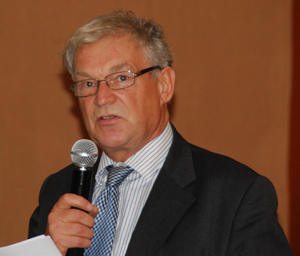 At the launch conference in Lilongwe the Norwegian Ambassador to Malawi, Mr. Asbjørn Eidhammer (picture left) addressed the audience on behalf of the Norwegian government. He pointed in particular to the interesting combination of partners behind the ALMA study; namely academic institutions in both Malawi and Norway, government and civil society in Malawi and a Norwegian development NGO.
At the launch conference in Lilongwe the Norwegian Ambassador to Malawi, Mr. Asbjørn Eidhammer (picture left) addressed the audience on behalf of the Norwegian government. He pointed in particular to the interesting combination of partners behind the ALMA study; namely academic institutions in both Malawi and Norway, government and civil society in Malawi and a Norwegian development NGO.
Ambassador Eidhammer was happy to note that Norway had contributed to this documentation project through the research institute SINTEF and also by the generous funding from The Norwegian Research Council. He also commended FORUT, the Norwegian development NGO specialised in alcohol policy, for its contribution to the alcohol policy development process in Malawi since 2008. This process has resulted in a new National Alcohol Policy for Malawi soon to be presented to the Cabinet and President for approval. – We have noted with appreciation that this process has now been deemed and documented as an international best practice by the World Health Organization in Africa, said Ambassador Eidhammer.
A favourable and a vulnerable position
- The ALMA study documents that Malawi is both in a favourable and vulnerable situation in terms of alcohol use and alcohol-related harm, says Dag Endal, FORUT Project Coordinator for Alcohol, Drugs and Development. Together with the Ministry of Health and Drug Fight Malawi FORUT organised the ALMA conference in Lilongwe.
- Drinking is less prevalent and accepted in Malawi than in many other countries. This is a good foundation for future alcohol policies in Malawi. However, this is also a challenge for policy makers, both in government circles and among NGOs. Policies are often aimed at changing problematic situations. In Malawi the biggest challenge will be the opposite, namely to maintain a positive situation with large part of the population not drinking at all or drinking very little. At the same time policies need to address the risky consumption among the drinkers, in order to reduce poverty and to prevent HIV/AIDS and gender-based violence, among others.
Mr. Endal in FORUT says that Malawi is at the same time in a risky position because of the relatively low prevalence of drinking in the population. – The multinational alcohol producers, in particular the brewers, have defined Africa as an emerging market where sales figures can be increased manifold. The market departments of the companies have strategies to recruit new consumer groups. In particular the young women of Africa will be a tempting target population for marketing, says Endal.
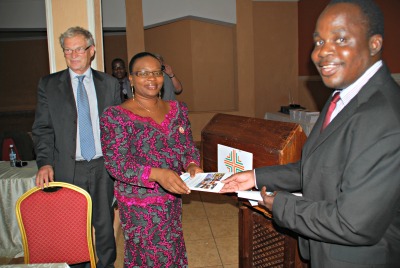 Alcohol producers with a double agenda
Alcohol producers with a double agenda
At the ALMA conference in Lilongwe the alcohol producers were represented and said that they wanted to be included in a collaboration to reduce alcohol-related harm. On the same day their mother body, SABMiller, confirmed that the company will “step up female focus” in their marketing strategies, according to the industry web site Just-Drinks.com.
- A change in young women’s drinking habits has most likely already started happening in Africa, says Dag Endal. This has not been subject to study in the ALMA project, but the change has already been observed in Malawi. – Informal reports indicate that alcohol drinking appears to be much more prevalent among young female university students than in the rest of the female population. Marketing is directed towards these young and up-coming females, through so-called drinking bashes, online marketing and, not the least, through social media like Facebook. In the week-ends young female students share through Facebook their ambitions to use their days off for heavy drinking.
Picture above right: Malawian Minister of Health, Hon Catherine Gotani Hara and the Norwegian Ambassador, Asbjørn Eidhammer, receive the ALMA report from Alister Munthali on behalf of the research team.
A struggle over the soul and minds of young women
- The future alcohol situation in Malawi and many other developing countries will be decided in a struggle over the soul and minds of the young, educated middle-class women, predicts the FORUT representative. – Shall heavy alcohol drinking be part and parcel of a modern feminine identity or shall it not? The future answer to this question is not the least of critical importance for the hundreds of millions of poor children of the world. It will also determine the prevalence of non-communicable diseases, HIV/AIDS and poverty in the developing world.
RELATED ARTICLES
- Involve young people as partners in prevention!
- New book reveals a series of unethical business practices by Heineken in Africa
- Adherence to age limits for alcohol sale very poor
- Beer girls are used to promote beer drinking in Africa
- Public health advocates urge Global Fund to end Heineken partnership
- The West African Alcohol Policy Alliance officially launched
- New National Alcohol Policy launched by Minster of Health
- Alcohol industry afraid of losing their health image, adopts new and offensive strategies.
- Integrating national policies on the harmful use of alcohol, gender-based violence and HIV
- Two research articles published
